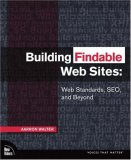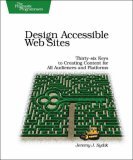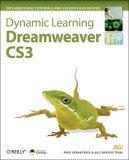When it comes to buying gifts for the technology nut or geek in your life there is one thing you can be sure about. They need a constant stream of new information to keep up with advances in technology. Books fit the bill. Here are ten great tech/geek books you might give the geeks in your life.
Envisioning Information by Edward R. Tufte (Graphics Press, 1990) is a classic. This book is about visual thinking. It deals with the use of images to reason and learn. After 17 years in print, it is still the definitive book on the topic. The book costs about $41. Tufte is the author of other must-read techy books, too.
Don’t Make Me Think: A Common Sense Approach to Web Usability by Steve Krug (New Riders Press, 2005) is about web site usability. It clarifies many concepts about navigation, home page layout, good copy, and more. It’s short and easy to read, yet contains foundation concepts for web page usability. The cost is about $27.
Worldchanging: A User’s Guide for the 21st Century by Alex Steffen (Harry N. Abrams, 2006) is an absolutely packed, all-inclusive look what is going on right now to create an environmentally and economically sustainable future. Not everything in this book involves technology, but plenty of it does. And there are lots of tips you can use today to change the world. This book costs about $25.
In terms of software, any book with “The Missing Manual” in the title will tell you absolutely everything about a particular software application. The books in this series include everything from Photoshop to Dreamweaver to operating systems. The cost for Dreamweaver CS3: The Missing Manual is about $30. Other good titles for particular software are the “Bible” books, such as Dreamweaver CS3 Bible, which costs about $32.
The Best of MAKE by Mark Frauenfelder (Make Books, 2007) is do-it-yourself project heaven for techies and those with a bit of the engineer hidden in their psyche. The book comes from articles at MAKE Magazine or the companion website at Makezine.com. The book costs about $23.
The Zen of CSS Design: Visual Enlightenment for the Web by Dave Shea and Molly E. Holzschlag (Peachpit Press, 2005) uses examples from the CSS Zen Garden site as the foundation for discussions on how to create beautiful, progressive CSS-based web sites. It’s an instructive look at the range of design methods made possible by CSS. This book costs about $30.
If your geek really wants to learn CSS, any book by Eric A. Meyer will be a good choice. His CSS: The Definitive Guide (O’Reilly Media, 2006) is now in its 3rd edition. It costs about $30. (I’d point out a couple of great HTML and CSS books by the author of this post, but hey, that would be self-serving.)
If your geek is design disabled, like me, any of Robin Williams’ books with Non-Designer in the title will be perfect. One such book is The Non-Designer’s Design Book by Robin Williams (Peachpit Press, 2003). Her examples make learning design concepts very easy. This book costs about $20.
Dreaming in Code: Two Dozen Programmers, Three Years, 4,732 Bugs, and One Quest for Transcendent Software by Scott Rosenberg (Crown, 2007) is ostensibly about creating software, but is really more about people and culture and social behavior. The cost is about $17.
Color Design Workbook: A Real-World Guide to Using Color in Graphic Design by Noreen Morioka, Terry Stone Sean Adams (Rockport, 2006) is a workbook using real world exercises and case studies to help you learn about color. About $27.
Every book listed here is available from Amazon.com. The cost I mention is the cost for a new book at Amazon. Most local bookstores carry them or can order them, also.
Know of a great book I left out? Feel free to tell us about it.
Cross posted at BlogHer.




